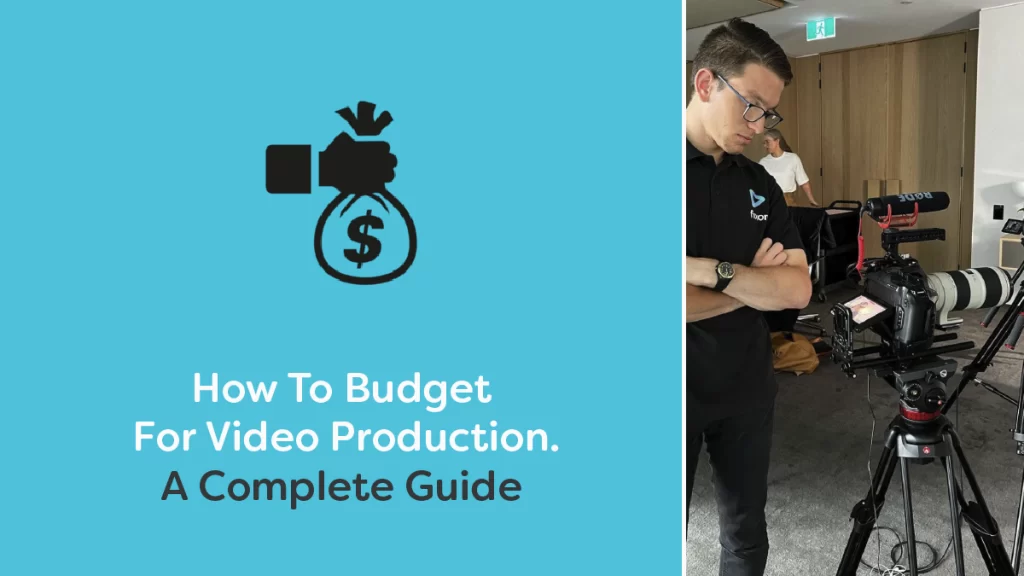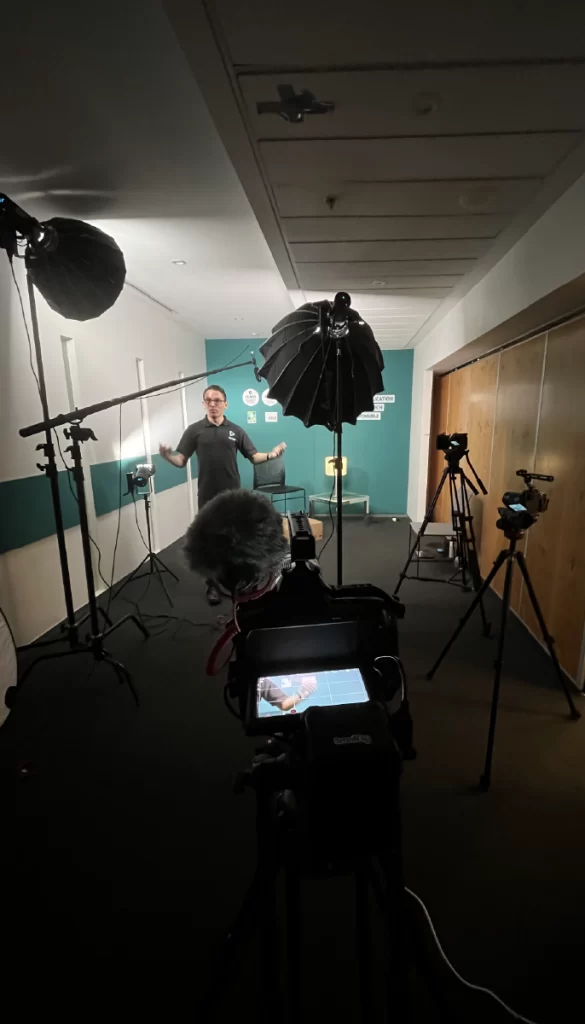How To Budget For Your Video Production

Creating a video production budget can be a complex task, especially for CMOs and marketing teams.
A well-planned budget can make or break a project, ensuring that your video meets both quality expectations and business objectives.
This guide will walk you through the essential components of budgeting for a video production, helping you allocate funds effectively and avoid common pitfalls.
1. Define The Scope Of Your Video Production Project
Before any financial planning begins, it’s essential to define the scope of your video production. This involves answering critical questions that will directly impact your budget.
How Many Videos Do You Need?
Large-scale marketing campaigns often require more than one video. Whether you’re creating a series of brand films, explainer videos, or content for multiple platforms, the number of videos you need will determine crew size, filming days, and post-production timelines.
What Is The Purpose Of The Video?
Is the video meant to showcase a product launch, communicate brand values, or serve as part of a larger content strategy? A promotional video will differ greatly in style and cost from an internal training video or a brand film aimed at forging an emotive connection.
Do You Need Actors, Voice-Over Artists, Or Internal Staff?
External actors or voice-over talent will generally increase your budget. It’s also important to consider the cost of licensing talent for different platforms or territories. Alternatively, using internal staff can reduce costs but might require additional training or multiple takes, affecting the filming schedule.
How Long Will The Video Need To Be?
Longer videos naturally take more time in both production and post-production. A two-minute corporate video, for instance, will have vastly different requirements than a 30-second social media clip.
2. Breakdown Of Costs
Once the scope is clear, break down the core expenses that make up a video production budget:
- Pre-production: This phase includes planning, scripting, location scouting, and scheduling. Costs here might also involve acquiring filming permits, location fees, and legal contracts.
- Production: This involves crew wages (director, camera operator, sound technician, etc.), equipment hire, transport, and set design. If you’re filming in multiple locations, travel and accommodation costs should also be considered.
- Post-production: After shooting, you’ll need to allocate budget for editing, sound mixing, colour grading, and possibly animations or visual effects.
3. Account For Unforeseen Costs (10-20% Buffer)
A golden rule in video production is always to keep a spare 10-20% of your total budget aside for unforeseen costs. While detailed planning can minimise risks, unexpected events can and do occur.
Some examples include:
- Additional shooting days: Weather delays or on-location challenges could require more time than initially planned.
- Last-minute changes: Adjustments to the script, additional voice-over requirements, or reshoots can all arise, especially if key stakeholders make late-stage decisions.
- Additional permits or location fees: If filming moves to a different location, new permits may be needed.
Planning a buffer ensures that these contingencies won’t derail your project or inflate costs unreasonably.

4. Making Smart Trade-Offs
Not every part of a video production will have the same level of importance. Identifying where to allocate more budget and where you can scale back is crucial to optimising your production spend.
- Do you need the highest-end equipment?
In many cases, mid-range cameras can provide excellent quality without the additional costs of premium equipment. A good crew will be able to maximise the potential of any equipment within reason. - Could stock footage or animations be used?
If live-action footage isn’t essential, high-quality stock footage or animations can sometimes be a more cost-effective solution.
5. Evaluate The ROI Of Your Video Production
As a marketing team, it’s critical to remember that video production is an investment. Understanding the potential return on investment (ROI) can help justify your budget to stakeholders. Ask yourself:
Will This Video Help Increase Brand Awareness, Lead Generation, Or Customer Engagement?
The more closely aligned the video is with business objectives, the easier it will be to justify a higher budget.
Is The Video Part Of A Multi-Video Campaign?
Spreading costs across multiple videos can often be more cost-efficient than creating separate budgets for each one.
Budgeting for video production is an integral part of any marketing strategy, especially for medium to large companies where the stakes are high, and quality is non-negotiable. By carefully planning the project scope, allocating funds for core production elements, and setting aside a buffer for unforeseen costs, your team can avoid budget overruns and deliver videos that drive tangible results.
Ready to bring your vision to life? Let’s make your next video project a success. Reach out to our Melbourne-based video production team today, and let’s create content that resonates and delivers real business value.
